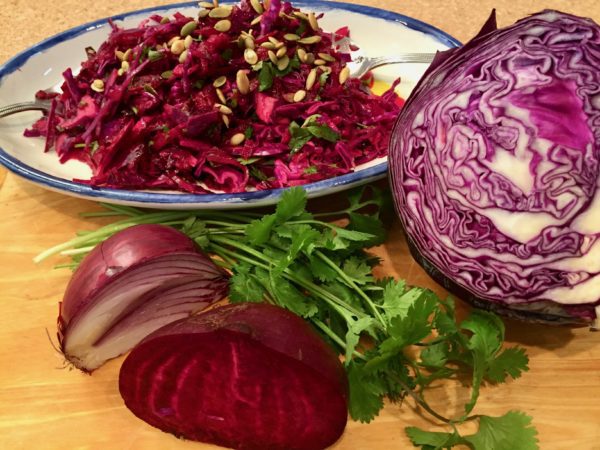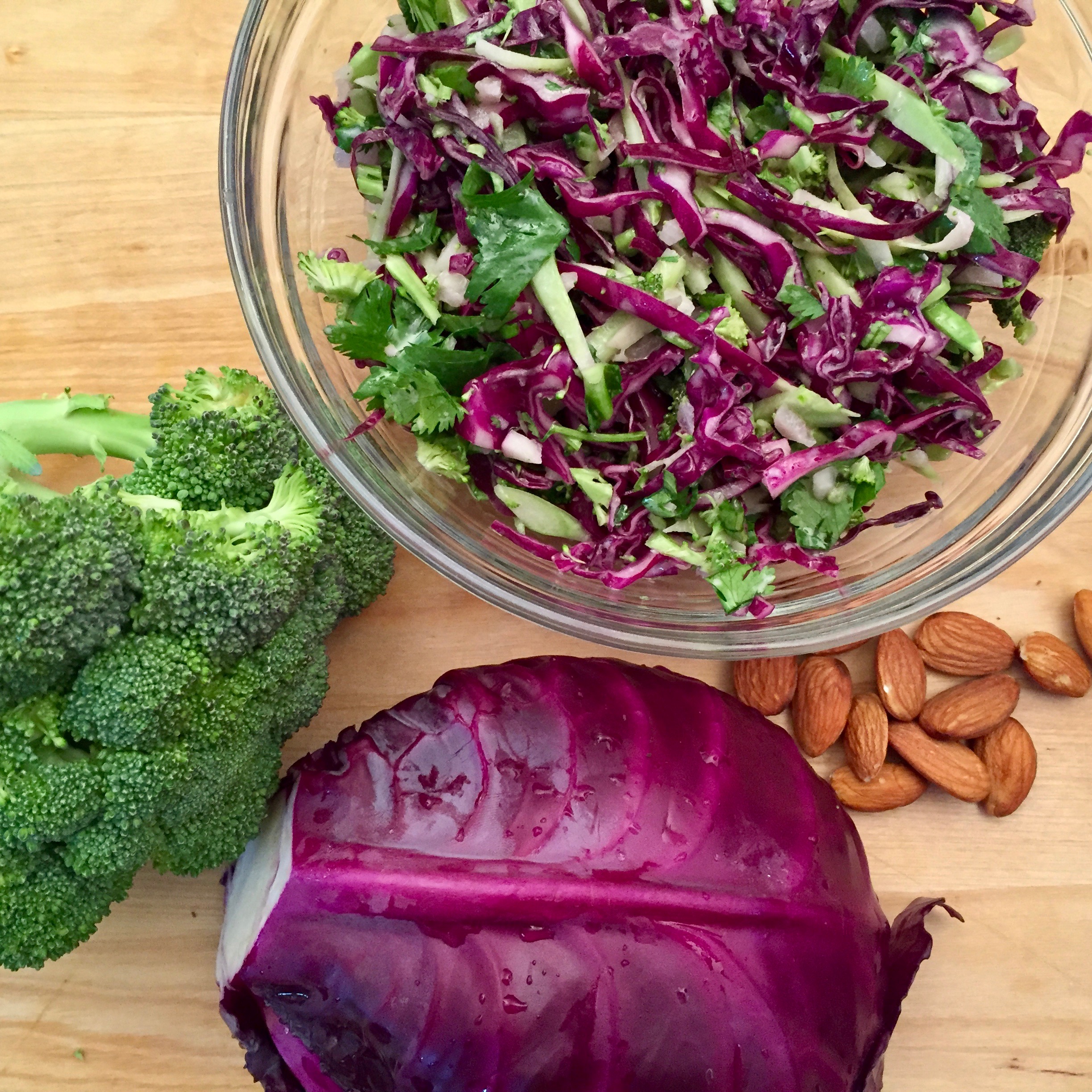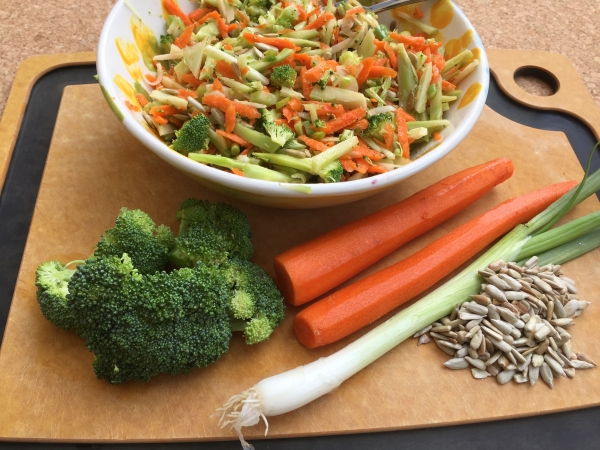4 Nutrient Dense Coleslaws
What? Did you know cabbage, and other cruciferous vegetables, have powerful properties protect against brain disease and strengthen your immune system? It’s a vegetable I used to avoid – blech.
Cabbage was cultivated going back 6,000 years. It was grown chiefly for medicinal purposes in ancient times. Today science is proving its brain-protecting, cancer-fighting, immune-boosting properties.
[su_expanding_quote_book alignment=”full” source_author=”Joel Fuhrman MD” source_title=”Super Immunity” full_quote=”Cruciferous vegetables are twice as powerful as other plant foods. They contain an array of compounds with powerful immune-boosting effects which can serve to attack microbes such as viruses; heighten resistance to viral infection, enhance defenses against bacterial infections, and have natural antimicrobial effects that can boost natural cellular defenses. A 20% increase in cruciferous vegetables intake corresponds to a 40% decrease in cancer rates. ” short_quote=”Cruciferous vegetables contain compounds with proven and powerful immune-boosting effects “]Cruciferous vegetables also contain sulphorophane, a powerful phytochemical that effectively reduce the occurrence and severity of Parkinson’s, Alzheimer’s disease, stroke while also enhancing stem cell growth.
Well! That certainly motivated me find a way to not just to eat cabbage but to enjoy it.
That’s when I discovered coleslaw. When I realized coleslaw doesn’t have to be slathered in mayonnaise, I discovered a whole new salad world.
Coleslaw from Dutch term koolsla (kool is the Dutch word for cabbage and sla part is Dutch abbreviation of salade). Dutch settlers brought their recipe for chilled cabbage salad to New York in the late 17th century.
Boring white cabbage is fun when tossed with other shredded cruciferous
- red cabbage
- Brussels sprouts
- broccoli
- cauliflower
Double the fun, flavor and nutrient density by adding other plant foods:
- spinach
- shredded carrots, or beets
- apple or jicama matchsticks
- chopped cilantro or parsley
- toasted nuts or seeds
- luscious chunks of avocado, seasonal mango, peach or pear for delightful textural contrast
Suddenly coleslaws aren’t just immune-boosting, brain protective arsenals, but also bright, beautiful, delicious, and gratifying.
Do you have a favorite coleslaw recipe?
Here are some of mine
Purple cabbage has extra health benefits. The purple color comes from anthocyanins – part of the flavonoid family of phytochemicals. Studies show they may improve blood flow, cognitive function, and help maintain thinking and memory by reducing inflammation and by inhibiting DNA damage in the brain.

This of this as a base recipe and change it up
- mix two different color cruciferous vegetables – shredded Brussels sprouts or broccoli
- swap the kale for spinach or another leafy green
- use pumpkin seeds or other nuts
- toss in a handful of seasonal fruit

The red, yellow, orange bell peppers change up the flavor and increase the nutrient density with carotenoids.



